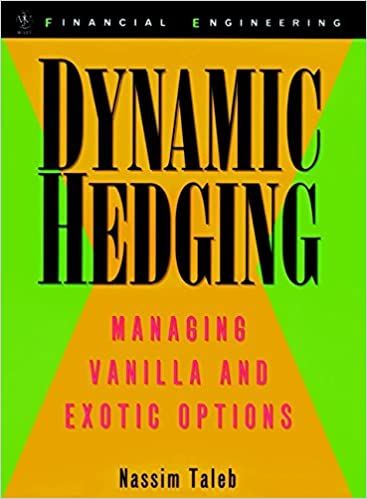Dynamic Hedging – Nassim Nicholas Taleb

“Dynamic Hedging” is a well-known and influential book in the field of finance and options trading, first published in 1997. In the book, Taleb discusses the use of dynamic hedging techniques to manage risk in financial markets, particularly in the context of options trading. He argues that traditional approaches to hedging and risk management are flawed and can lead to unexpected losses, and he proposes a more dynamic and flexible approach to risk management that can better account for the unpredictable and volatile nature of financial markets.
Black Swan Events
Taleb coined the term “Black Swan” to describe rare, unpredictable events that have a major impact on financial markets. These events cannot be predicted or anticipated, but their impact can be mitigated through dynamic hedging and risk management techniques. Traders and investors should always be prepared for the unexpected and be ready to adjust their positions as market conditions change.
Convexity
Convexity is a measure of how a financial instrument’s price changes in response to changes in the underlying asset’s price. Options and other derivatives often exhibit convexity, which can provide powerful risk management tools for traders and investors. Understanding the convexity of a financial instrument is key to effectively managing risk.
Options Trading
Options are financial instruments that give the buyer the right, but not the obligation, to buy or sell an underlying asset at a predetermined price and time. Options trading can be a valuable tool for managing risk, but it requires a deep understanding of the underlying assets and the risks involved. Options trading can be particularly useful in volatile markets, where the risks of unexpected price movements are high.
Arbitrage
Arbitrage involves taking advantage of price discrepancies in different markets to make a profit with little to no risk. Arbitrage can be used to offset risks in other parts of a portfolio, providing a valuable tool for risk management. Traders and investors must be able to identify and take advantage of arbitrage opportunities quickly, as these opportunities tend to be short-lived.
Dynamic Hedging
Dynamic hedging involves constantly adjusting a portfolio of financial instruments to minimize risk and protect against unexpected market movements. Traditional hedging techniques are often too static and inflexible to deal with the unpredictable nature of financial markets.
Dynamic hedging requires a deep understanding of the underlying assets and the risks involved, as well as the ability to quickly adjust positions as market conditions change.
Liquidity
Liquidity is a measure of how easily a financial instrument can be bought or sold without significantly affecting its price. Liquidity is important for managing risk because it allows traders and investors to quickly adjust their positions in response to changing market conditions. Illiquid markets can be particularly risky, as it may be difficult or impossible to exit a position at a favorable price.
Volatility
Volatility is a measure of the degree of variation of a financial instrument’s price over time. Volatility is a key driver of risk in financial markets, and it can be used to measure the potential impact of Black Swan events. Traders and investors must have a deep understanding of volatility and be prepared to adjust their positions accordingly.
Greeks
The Greeks are a set of mathematical measures used to quantify the risks associated with options trading. The most important Greeks are Delta, Gamma, Vega, Theta, and Rho, each of which measures a different aspect of an option’s risk.
Traders and investors must have a deep understanding of the Greeks and be able to use them to manage their options positions effectively.

